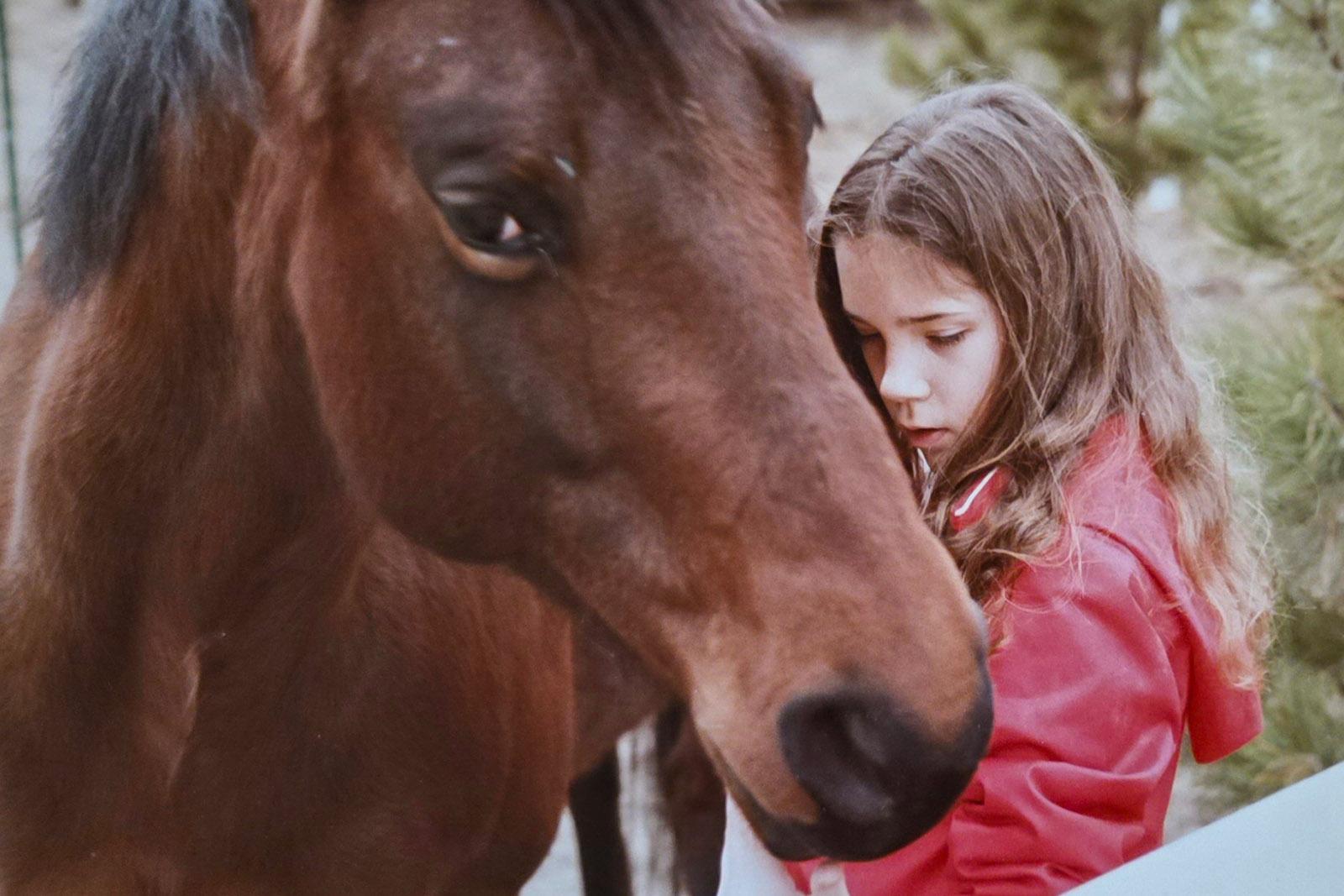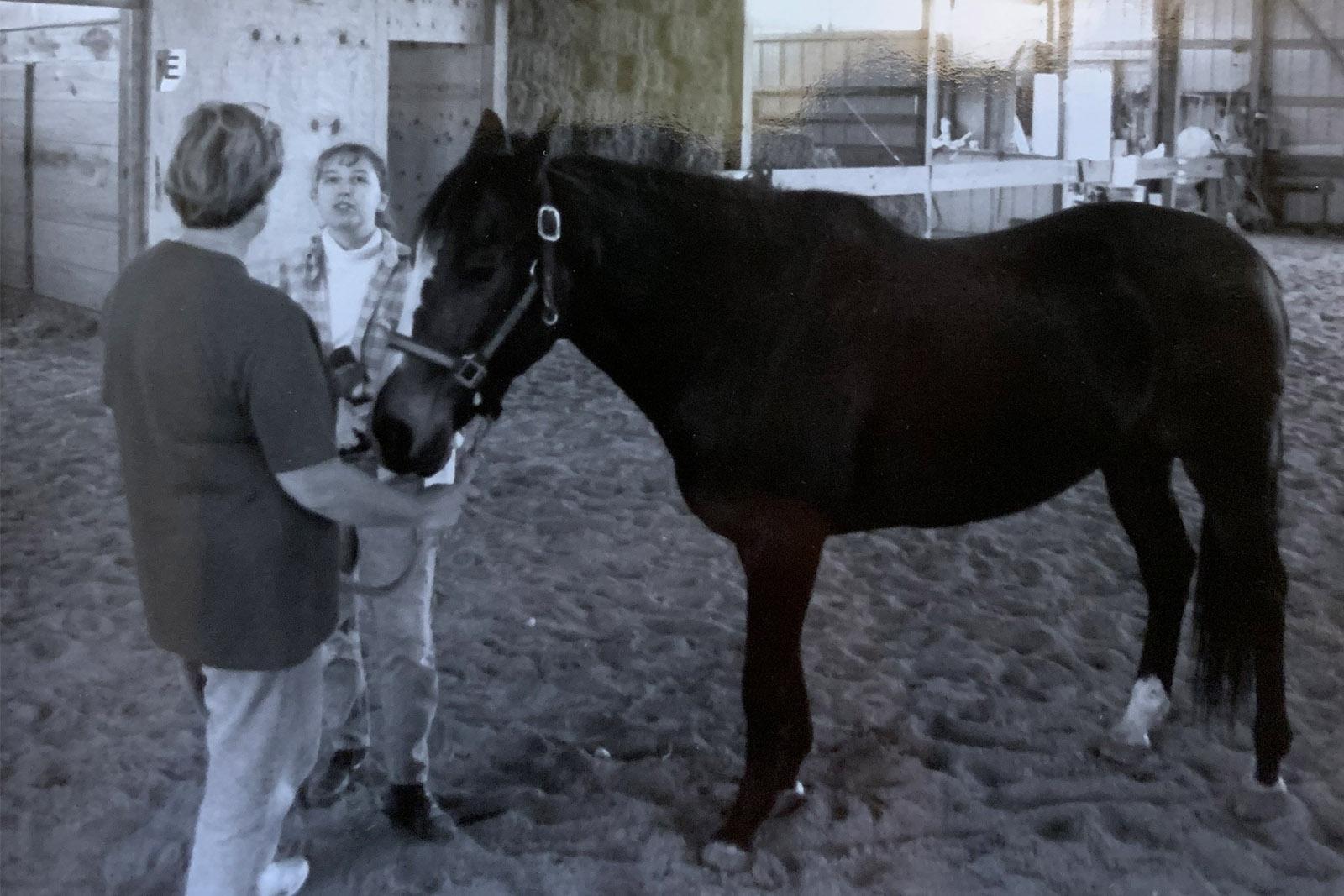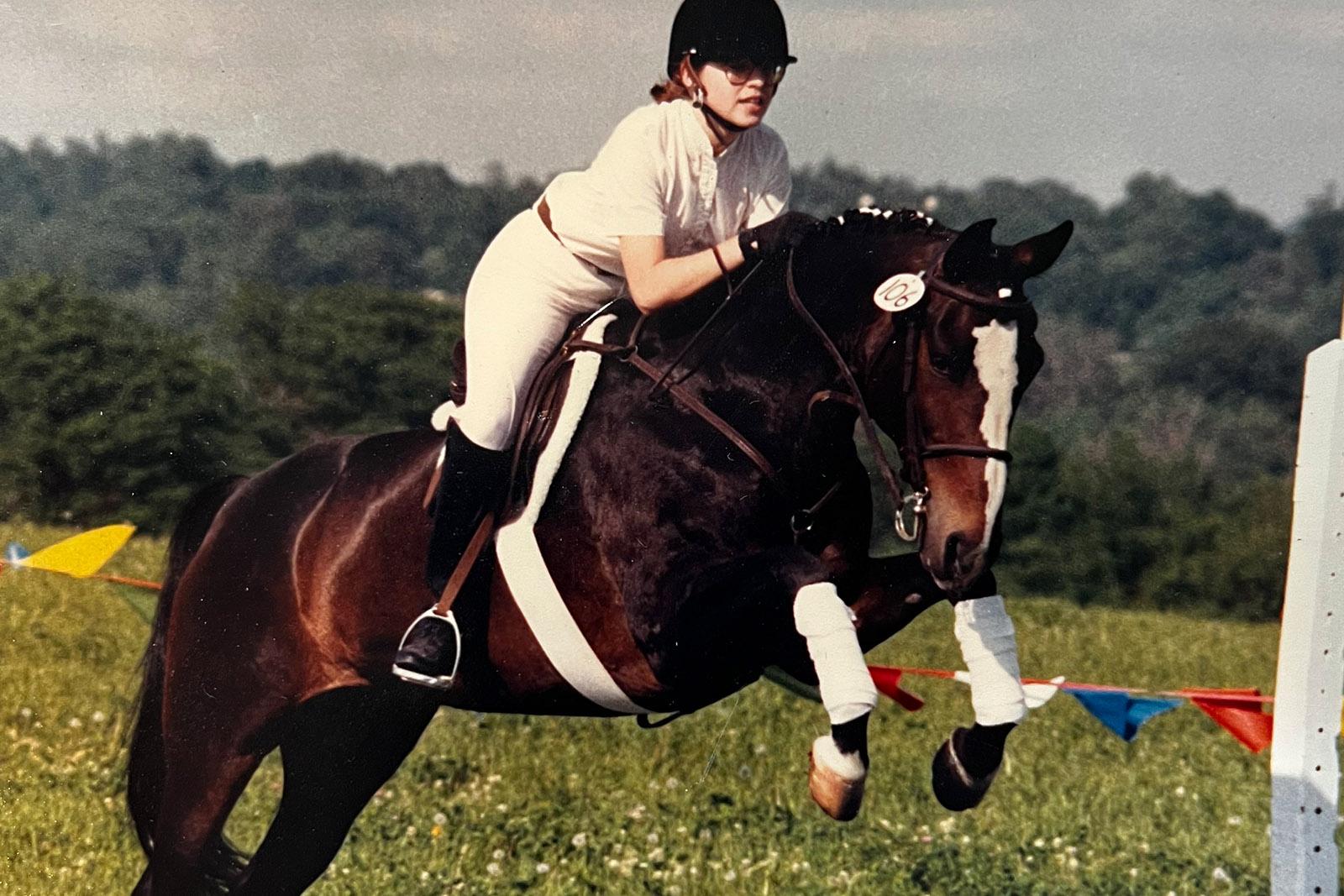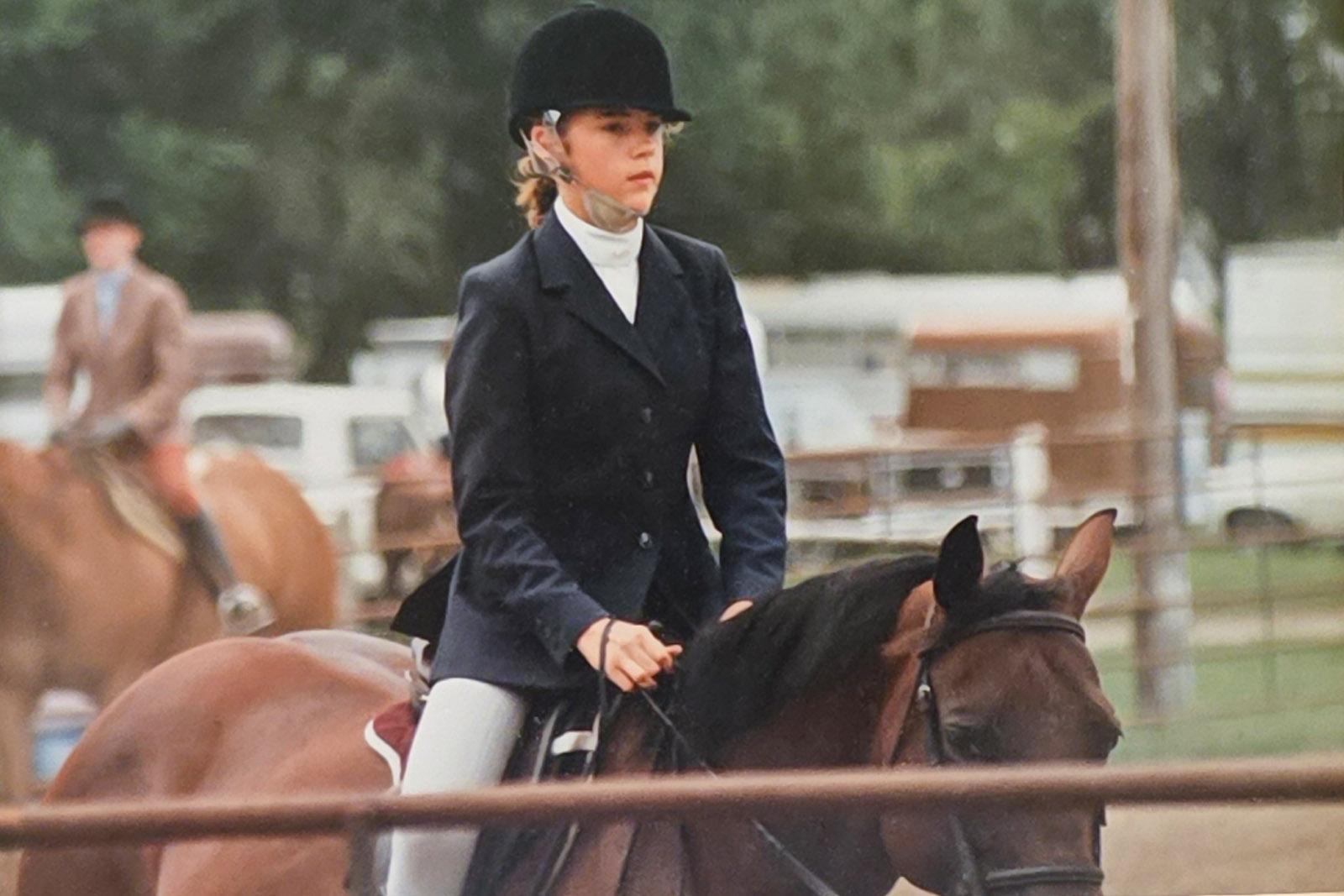- Home
- The Headlines
- How Horses Brought Us Closer to Each Other and Our Work
How Horses Brought Us Closer to Each Other and Our Work

Our Love for What We Do Runs Deep
If it’s outdoorsy, there’s probably someone at Swanson Russell who's passionate about it. No wonder we pride ourselves as The Nation’s Leading Agency for Brands That Work and Play Outdoors. From camping in the backcountry to gardening in our own backyards, spending time outside is our official pastime.
Our Outdoor Passion Profile series shares the stories of our most valuable asset: our people. Senior Account Manager Lana Erickson and Designer Staci Nass are both passionate equestrians and became fast friends at local horse barns before they connected at Swanson Russell. Horseback riding is more than just a hobby, and both Lana and Staci have learned a lot about livestock, agriculture and life through their horses.
Swanson Russell: How long have you been riding, and how did you pick it up?
Lana Erickson: I’ve always loved horses. I remember being a young elementary school kid and getting Horse Illustrated magazine. So right around nine or 10, my mom worked with a gal who owned horses and whose daughter rode, so I went out and started riding with them. At that time, I did what's called “games.” Which means they just plopped me on a horse that knew how to do barrels and poles, and I was just along for the ride. I was like, away we go. I fell in love, and eventually my parents agreed to let me take lessons. And lessons turned into my own horse at age 12. There have been some breaks, but it never really stopped.
Staci Nass: You’re either horse crazy or you’re not. I’m definitely horse crazy — I loved it from day one. I started with lessons at an Arabian barn when I was eight and then got my first horse when I was nine. So that was how we kind of got into it — and then we started showing horses too. I eventually outgrew our first horse, and I got my second when I was 11. My sister started riding and got more into English riding at that point — dressage and jumping. We both did a lot of riding with 4-H, the club shows, the county fair and the state fair. When I went away to college, I started at an equestrian school but ultimately came home. I got out of the horse world for a while but got back in six or seven years ago when I went to a mother-daughter horse camp. I realized how much I missed it, so I started taking some lessons and riding again.
SR: What’s kept you coming back to horses over the years?
LE: For some people, it’s a phase and for some people, it’s a part of your heart. Horses become your physical fitness, your therapist, your family and your community. And of course, they’re also your hobby, your pet, your best friend. You can never be at a horse barn for just 10 minutes. I'll go to the barn for 30 minutes and four hours later my family calls asking when I’ll be home. It’s the barn black hole.
SN: We were in the same boat where, as kids, we had horses, but then you become an adult and you only have so much money and time and you have your own kids to take care of. But horses keep you coming back. Horses are super, super empathic. That’s how they work in a herd, and there's all this research that shows they can attune to your heartbeat. When you’re with a horse and if you’re upset, they're going to be upset. They feel what you feel, and I’ve noticed spending time with horses has helped me regulate my own emotions better.
SR: Tell us about your horses.
LE: I have two horses. My mare Skye is what’s called a Medicine Hat Paint. Paint is her breed; Medicine Hat refers to her markings. Medicine Hats are just interesting in that they’re almost all white. Most white horses aren’t actually white, they’re gray, but Skye is actually white. She has pink skin instead of black skin, and she sunburns easily – she’s a fragile flower. Skye also has two blue eyes which is kind of cool. I wanted a horse that I could continue to compete on and that my daughter Eva could safely ride in 4-H. Skye is like a standoffish cat in a horse’s body. She’s got a really strong work ethic; she’s just not a cuddly horse. Skye was injured about five years ago and is now retired. I can ride her a little bit, but she’s functionally lame, so I got Mimi.
I lease Mimi from a lady who lives in Omaha, and she is my working horse project. She’s now 14, and I’ve had her for three years. She’s a Saddlebred which is an unusual horse to have in the sport of dressage. But she’s actually lovely. She is like a thousand-pound Labrador puppy that’s kind of scared of its own shadow. She’s very sensitive but very cuddly. I love them both for very different reasons.
SN: I have Philip. He’s registered as a Paint, but you wouldn’t know looking at him — he’s solid-colored. He is called a bay which is dark brown with a black mane and tail and black legs. Philip is called a breeding stock Paint. So it means that the color didn’t come out the way it typically does. He’s 13 and yeah, he’s been really interesting and fun. Like Lana said, we’re very attuned. He just watches for me all the time, and he gets kind of protective of me. We’re constantly working on balance because he's really long and doesn't really know where his feet are. You’d think he’d know by now, but he’s getting better. He’s a good-sized horse.
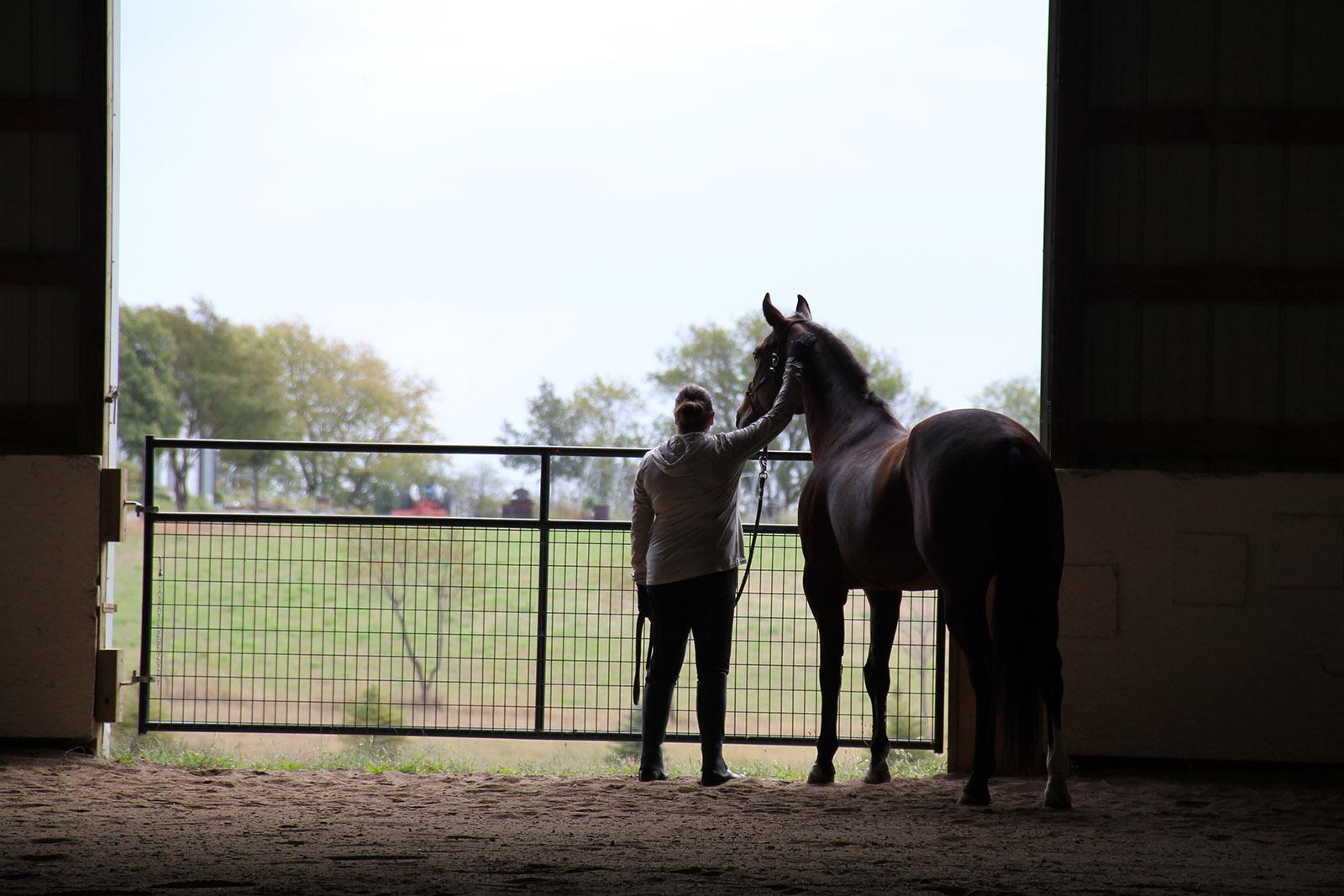
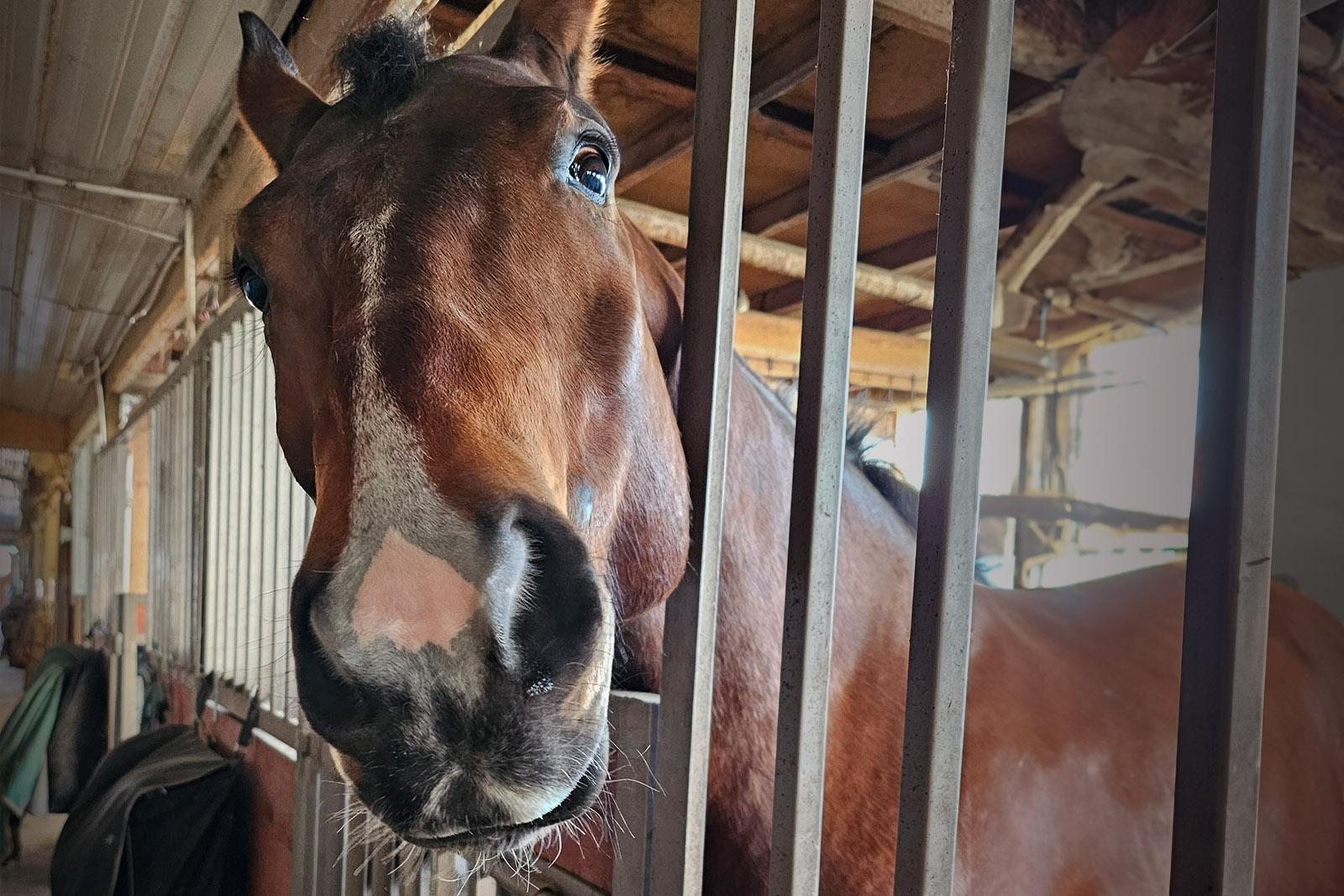
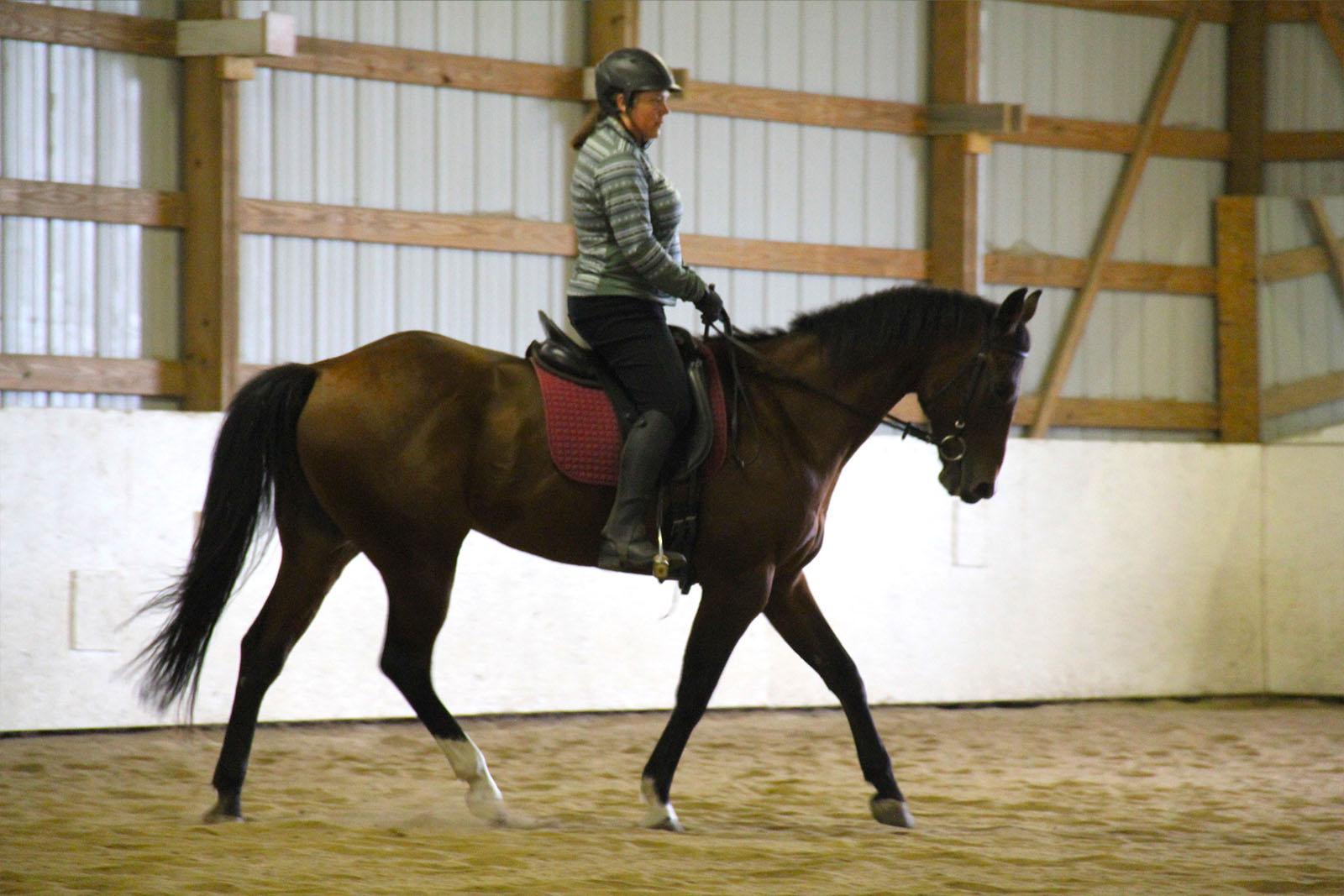
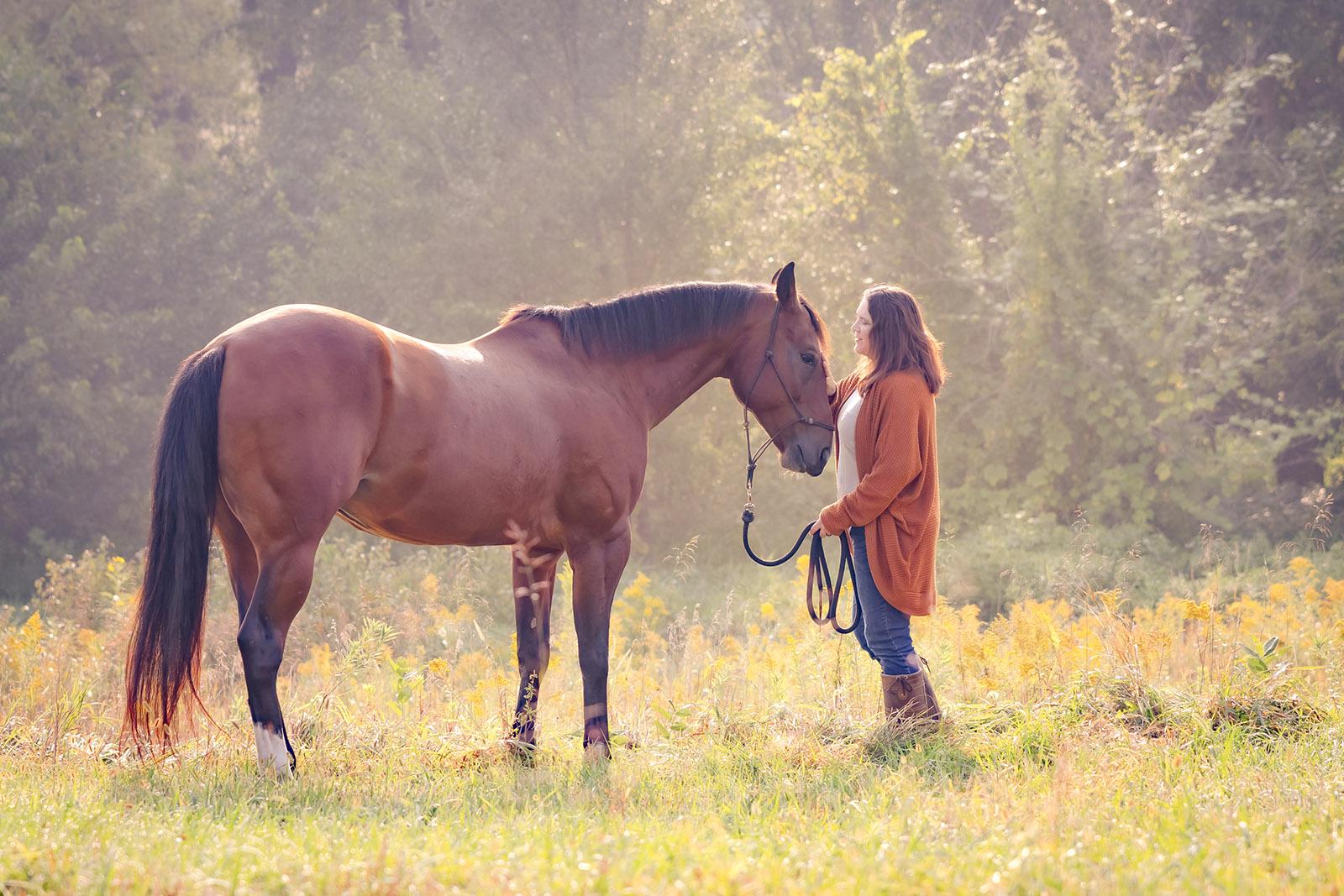
SR: What kind of riding do you do now?
LE: I don’t show right now. But I’m still training on dressage principles with a really healthy dose of natural horsemanship in there. I have started doing what are called clinics with Mimi, which just means that, in addition to the lessons I take with my regular trainer, local barns bring in very accomplished guest trainers. I did show with Skye for quite a long time until she got injured.
SN: We’ve done a few shows, Philip and I, but they didn’t really go well because he wasn’t in a good head space. So we reset and have started over. My end goal is to show, but right now we're still just doing training. Baby steps.
SR: When did you two realize that you both shared a passion for horses?
LE: We met through a mutual friend who had a horse I was helping take care of at Staci’s barn. It would've been the summer of 2019 because it was before I started working at Swanson Russell. So Staci and I met there, but we didn’t really become close until we both started working here. We started talking more on Slack about our horses, and when we started to come back to the office more regularly [after COVID], we’d go on walks and talk horses at least twice a week.
SN: I eventually moved to Lana’s barn, but it took a little while. Then we were together all the time. And we don’t live that far from each other. We both have kids. We’re the same age. We graduated from high school the same year. Horses brought us together, but we have a lot in common outside of horses, too. We’ve just become really good friends. She’s my bestie now.
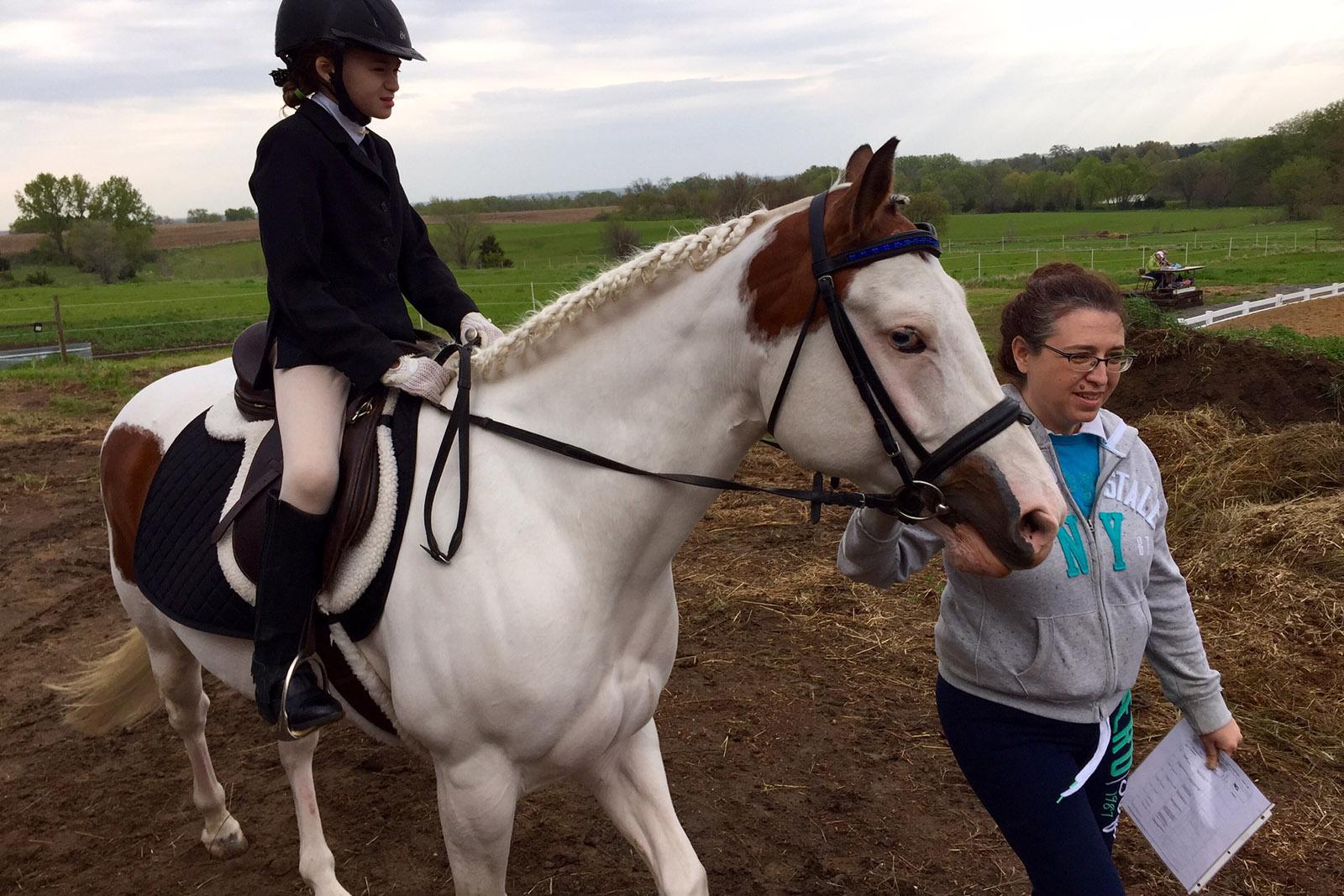
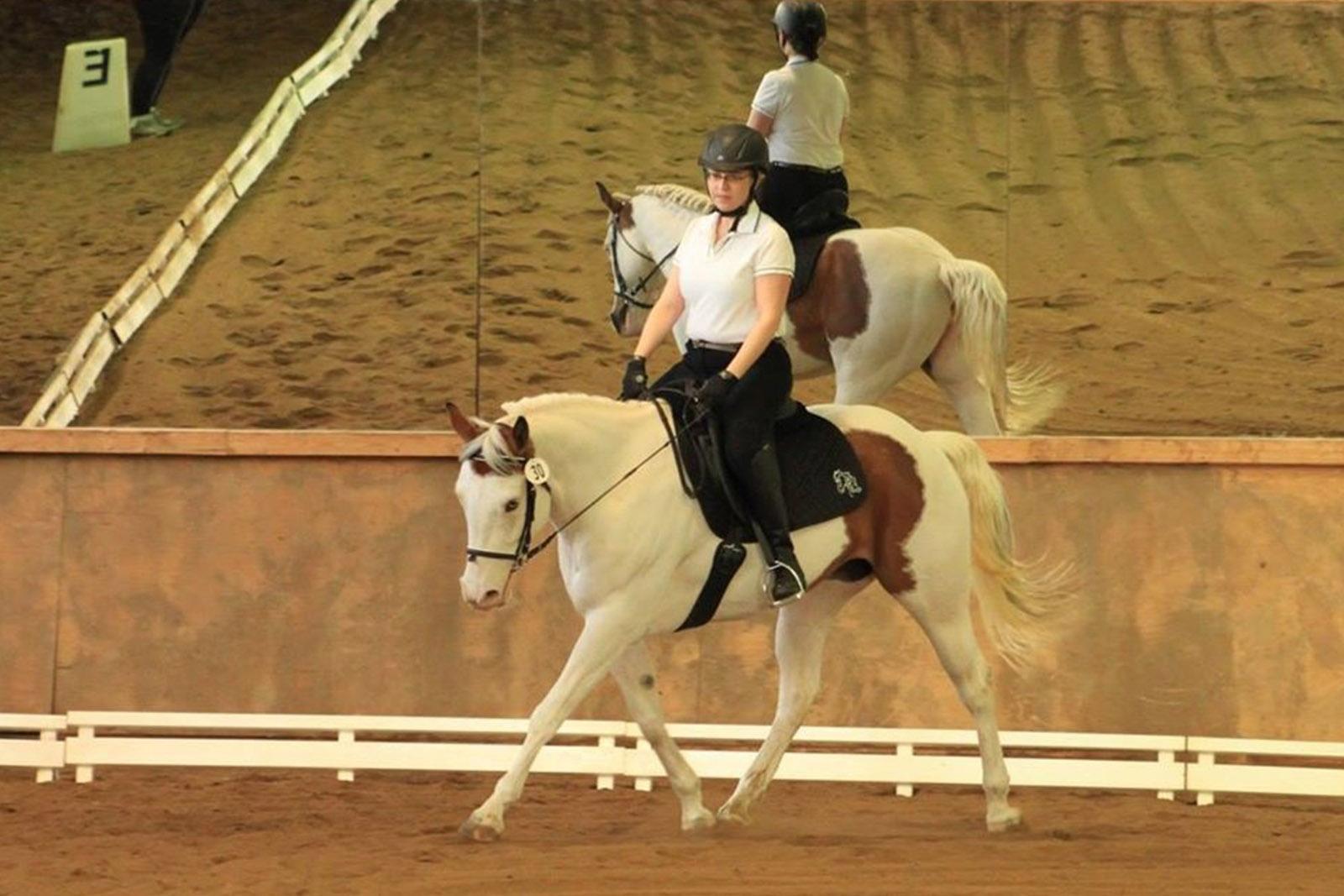
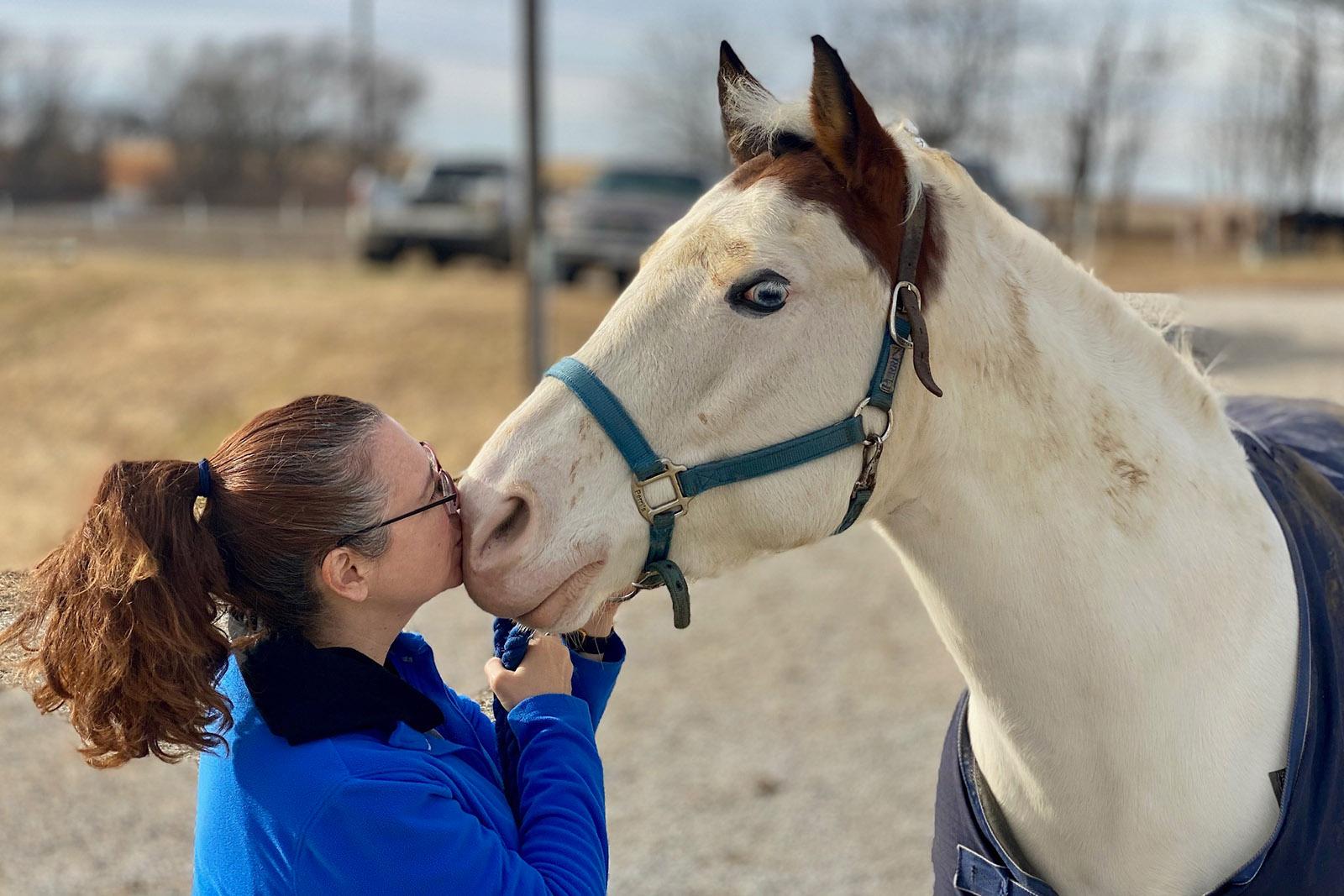
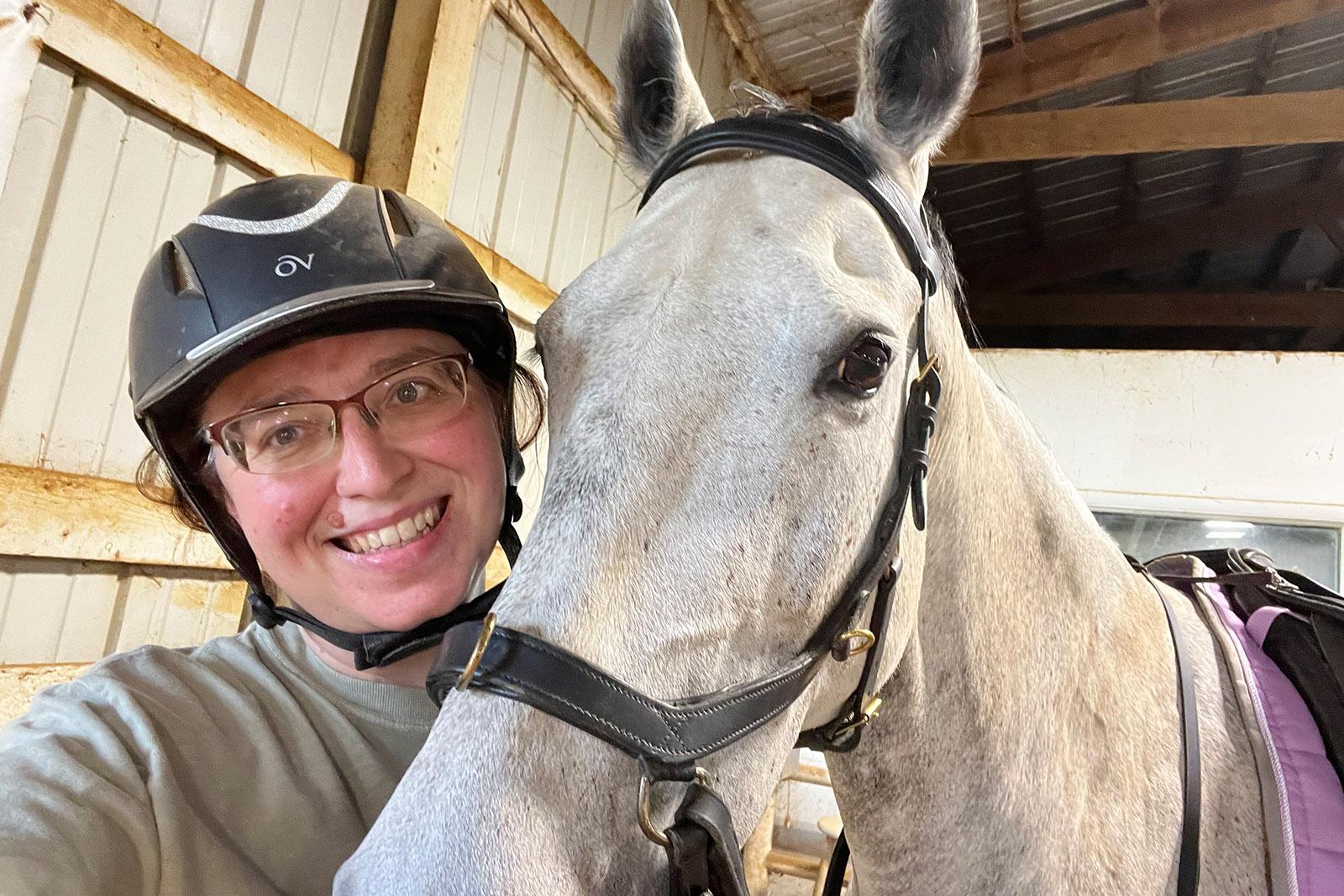
SR: Tell us about your role at SR and your connection to outdoor brands.
SN: I’m a designer, and I’ve worked on pretty much every outdoor client we have. Sometimes I’ll see products I’ve worked on in the real world which is really cool. For example, I’ve done design work for RESCUE! fly traps, and I’ve seen them at the horse barns I go to and around town at places like Menards or Tractor Supply. I see packaging I helped design on the shelf, which gets me really excited.
LE: I’m an account manager, and I have two agribusiness clients right now — Texas Beef Council and BASF Nunhems, which is a vegetable seed company. When I was young, we lived in western Kansas. My grandparents and parents farmed — mostly wheat and cattle. By the time I started riding, we were living in Kansas City, and my dad was teaching. But between farming and horses, you learn a lot about agriculture. I don’t know a single horse person who isn’t cognizant of feed trends and what’s happening with hay quality and prices with droughts and floods.
With Texas Beef Council, we’re really tuned into the things happening in Texas affecting feed for cattle (and horses). Recently Texas has had horrible droughts, wildfires and floods. When you take care of horses and are plugged into a larger community that raises livestock, you understand feed prices, grazing practices and everything’s connection to the land.
“You learn to work, you learn to be tough and you learn to take care of something else before yourself.”
SR: How has your love for horses changed you for the better?
SN: One of the best things about horses is the community. A while back, we both went to a horse clinic to visit our trainer, and when we got there our trainer says a horse belonging to one of our friends is sick, and they’ve been keeping an eye on it. But the owners are in Minnesota, so our trainer asks if we’d be willing to go check on this sick horse about half an hour away. So we go, and this horse is not just sick. This horse is dying. It’s in distress. And the owners are driving back from Minnesota — they’re calling us, they’re crying. It’s bad. So the owner’s ask, “Can you take our horse to K-State right now?” Kansas State has one of the best large animal hospitals in the country. So that's what we did.
LE: So the owner’s parents showed up with their truck, and we got a trailer hooked up. But this horse was on the ground and stuck against the door, so we couldn’t get inside the horse’s stall. We got a ladder and Staci literally scaled the top of the stall and jumped in to get this horse up.
I told her I’ve never driven a rig that far before and I’m nervous, but someone needs to do this. We loaded the horse up and hit the road. We got to the animal hospital, and the horse was in surgery in an hour — the horse lived and is doing great now. But that’s the kind of community we have — just a willingness to help and do what needs to be done.
Horses also make you tough. Physically I’m not a large person, but you’re lifting 50-pound bales of hay and leveraging all your weight to get a stubborn, 1,100-pound horse to move. And mentally, owning horses can be super overwhelming. You have to understand that a horse is a decades-long commitment — because that’s how long these animals can live. You have to understand there are costs — financial costs but also heartache. But you learn to work, you learn to be tough and you learn to take care of something else and always put that something before yourself.
Our passion for the outdoors helps us Make Belief™ for brands. Learn about our approach, explore our work and sign up for our newsletter to see all the reasons why we're the Nation's Leading Agency for Brands That Work and Play Outdoors.
